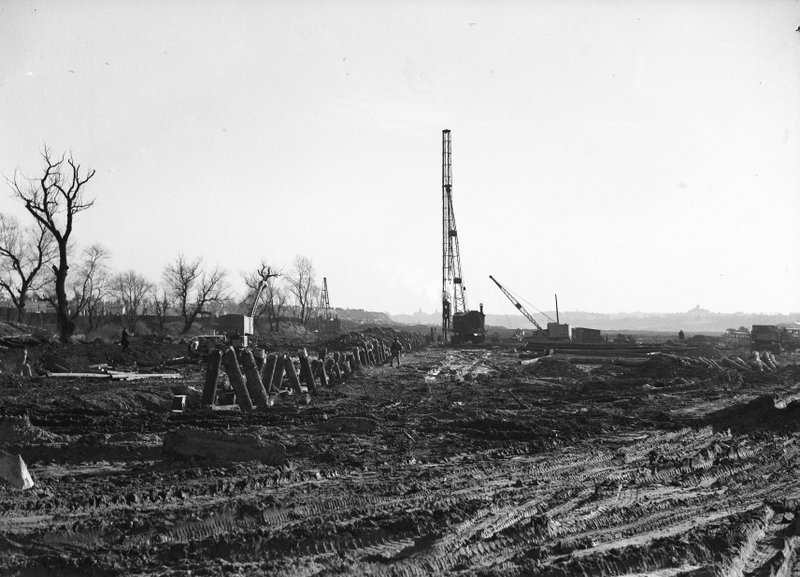16. The Lost World’s Fair Subway Line

The New York City subway is constantly evolving and over its past one hundred plus years of growth, the system has gained, lost and made adjustments to various lines and stations. One of the systems most short-lived lines was the IND World’s Fairs subway line built in 1938. For the first World’s Fair hosted by New York City at Flushing Meadows-Corona Park in 1939, a new subway line was created to connect riders from Manhattan to the World’s Fair Terminal Station on the fairgrounds. The two-mile spur started near the Forest Hills-71st Street stop (along today’s M/R lines) at a flying junction, a rail crossing where tracks cross over ground level trucks via a bridge. It then ran through Jamaica Yard on extended tracks that formerly went up to or through the yard storage area, and turned north along the east side of Flushing Meadows-Corona Park atop a pine wooden trestle built over marshland (made famous as the Great Gatsby’s Valley of Ashes).
The line ended at the new World’s Fair station. This additional line, which cost an extra five cents to take on top of the usual 5 cent fare, allowed riders to get to the fair from Hudson Terminal (today’s World Trade Center stop) to the World’s Fair, or the double-lettered GG train from Smith-9th Street (going north to Queens Plaza, and extending to Forest Hills-71st Street). The spur cost $1.7 million to build, but due to political forces, financial reasons and the fact that the line did not meet construction standards for permanent lines at the time, it was demolished, almost immediately after the fair ended, in 1941. The double GG line and the World’s Fair station situated near Meadow Lake still hold the distinction of being the only of their kind to be intentionally demolished in the subway history.
For the 1964 World’s Fair, there were no new lines or stops created, but there were specially designed cars that riders could take to Willets Point. You can learn more about both World’s Fairs and see the physical infrastructure, architecture and art that does still exist on an upcoming Remnants of the World’s Fairs at Flushing-Meadows Corona Park tour!





